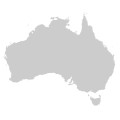Euphrasia collina subsp. diversicolor
J. Adelaide Bot. Gard. 5: 223 (1982)
Taxonomic status
Accepted
Occurrence status
Present
Origin
Native
Degree of establishment
Native
Threat status
FFG:
Critically Endangered (CR)


